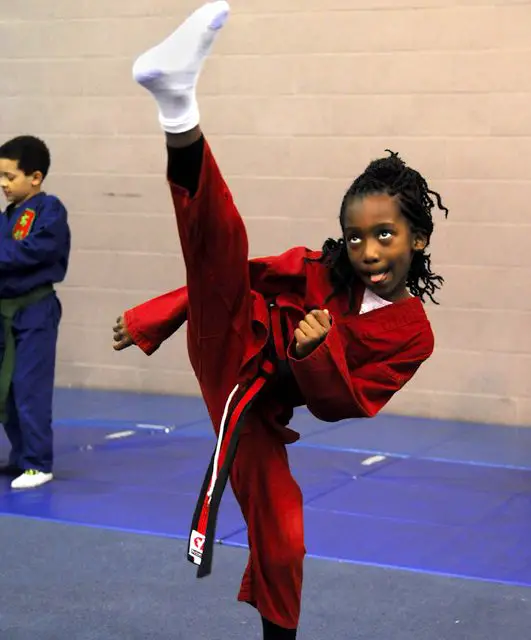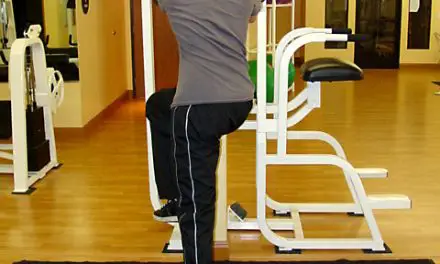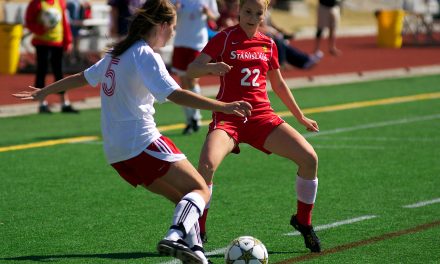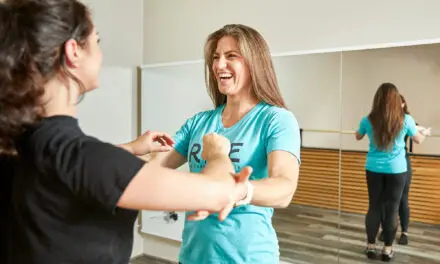Dynamic stretching definition
Dynamic stretching is a type of stretching that involves moving your joints through your normal range of motion repeatedly. Do not confuse this with ballistic stretching because dynamic stretching is done in a controlled manner. The ballistic version is done in a fast and uncontrolled way, which includes bobbing and bouncing.
While the word “stretching” in dynamic stretching doesn’t really fit into the dictionary definition or our common notion of stretching, the term is already stuck in most textbooks, many websites, and guidelines from several fitness organizations.
What is the difference between static and dynamic stretching?
Since dynamic involves you moving your body repetitively, static stretching is where you hold a stretch for a period of time like statue. You can do this with a tool, another body part, or a workout partner—as long as know how to perform PNF stretching. Rather than preparing your body and mind for the exercise or activity you’re going to do, static stretching has been shown to decrease power output but it has “trivial” effects in the short term.
What is the focus of dynamic stretching?
Because dynamic stretching is sports-specific and doesn’t have a specific guideline, such as the number of reps and duration, or a to-do list, you can do almost any type of repetitive movement that fits your activity.
But based on the SAID principle (specific adaptation to impose demands), the type of dynamic stretching you choose should mimic the activity that you’re going to do. For example, soccer players may do leg swings in various planes of motion, and a wushu practitioner doing figure-8 arm swings to mimic strikes and sword swings. Therefore, dynamic stretching exercises should be close to the activity that you are going to do.
Dynamic stretching exercise examples
There are probably scores of exercises that you can do, and you can make up new ones that fit your activity. The following list are common examples that can help you get started.
Trunk twists
This exercise has several variations, including the upright trunk twists and bent over version. Because many sports and activities involve trunk rotation, this can be an ideal warm-up to start. You can experiment with using a stick, a towel, or simply your bare hands.
Multiplanar lunges
Because many sports involve the lunge position in a variety of angles and planes of motion, the multiplanar lunge warms up your body to be more prepared for such sports, such as volleyball and baseball. You start from a standing position and you lunge to the front, side, and with a rotation. The degree of turning you do can vary from about 45 degrees to 180 degrees.
Another variation you can do include adding a torso twist or a reach toward the ground as you lunge.
Leg swings
This dynamic stretching exercise warms up your entire lower body that can be done in multiple planes of motion. The key is to keep the swings in control within your own range of motion.
Running butt kicks
Running butt kicks involve rapid kicking motions toward your butt with your heel, which is supposed to warm up your legs. While this seems like a reasonable exercise to warm up before you run, Track USA suggests that it may be a poor choice for warm-ups because it “teaches athletes to point their knee downward and puts more stress on the hip flexors and quad muscles when they drive the knee and foot forward while running.”
This ties back to the concept of the SAID principles (specific adaptations to imposed demands), where you get better at specifically what you train to do. The closer to the actually activity you are going to do, the better the warm-up’s transferability. However, you could still do butt kicks as a general warm up if you do not plan to run or sprint.
High Knee Drills
High knee drills is an alternative to butt kicks if you are a runner because the motion emphasizes on placing your heel in front of your body rather behind you.
Jumping jacks
Old-school jumping jacks never really go out of style. It does not specific target any muscle groups or emphasize specific movement patterns, but it gives an overall full-body warm up. If you want a variation of this exercise, Coach Nick Tumminello demonstrates the reverse jumping jacks.
What does scientific evidence say about dynamic stretching?
A 2016 systematic review pooled data from 84 qualified studies on the acute effects of dynamic stretching. The researchers found a mixed-bag of results in the literature that shows dynamic stretching is better than static stretching for increasing range of motion and vice versa.
“These conflicting results could be ascribed to the different natures of stretching, which that renders comparisons difficult,” they wrote. So, there is no clear evidence that one type of stretching is better than another to increase flexibility, even if the effect is temporary.
Likewise, the review found that dynamic stretching for athletic performance, such as vertical jumps and balance, also have mixed results. Many of the studies have found “significant enhancement” of force and power or no difference.
They also cited four studies that found dynamic stretching could decrease performance. These negative studies have mixed protocols, such as including passive and active stretching and mixing up the term “ballistic stretching” with dynamic stretching.
When comparing standing stretching with walking stretching, the researchers found that dynamic stretching led to better sprint time, agility, and specific movement patterns than other types of stretching.
They hypothesized that the walking stretches “could help rehearsal of specific movement patterns allowing muscles to be excited earlier and faster,” which decreases sprint time and increase power and speed. Increased muscle temperature could also contribute to increased muscle and joint flexibility and more synchronized muscle contractions.
While there are no updated systematic reviews of the scientific literature of dynamic stretching yet, a few recent studies found mixed results on its effect on athletic performance.
A 2019 study from Qatar University found dynamic stretching alone can decrease performance among young male handball players. Minor muscle damage from the stretching could explain the primary cause, which can last up to 24 hours.
Another study from Franklin Pierce University that was published in early 2020 found similar results in increase ankle dorsiflexion by using foam rolling, dynamic stretching, or a combination of both techniques. They suggested that the intervention used should be based on “each individual patient’s ability, preference, and response to treatment.”
Strength training alone could be just as effective as other types of stretching, but nobody really knows if it’s better than dynamic stretching alone since no research yet has examined that.
Conclusions about dynamic stretching
So far, there’s no right or wrong way to do dynamic stretching, and the large body of evidence suggests that there are moderate to little benefits to using this method to improve athletic performance or flexibility. Like treatment for pain, it’s likely that everyone would have different adaptations and responses to dynamic stretching because of our personal differences, such as anatomical and movement variability.
Feature photo credit: Staff Sgt. Thomas Trower, U.S. Air Force
A native of San Diego for nearly 40 years, Nick Ng is an editor of Massage & Fitness Magazine, an online publication for manual therapists and the public who want to explore the science behind touch, pain, and exercise, and how to apply that in their hands-on practice or daily lives.
An alumni from San Diego State University with a B.A. in Graphic Communications, Nick also completed his massage therapy training at International Professional School of Bodywork in San Diego in 2014.
When he is not writing or reading, you would likely find him weightlifting at the gym, salsa dancing, or exploring new areas to walk and eat around Southern California.





